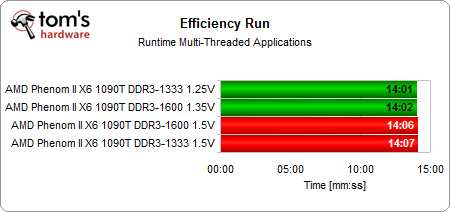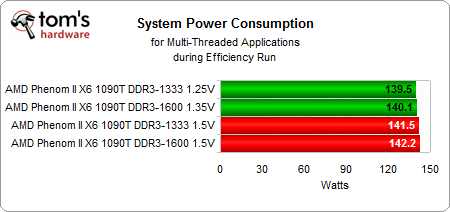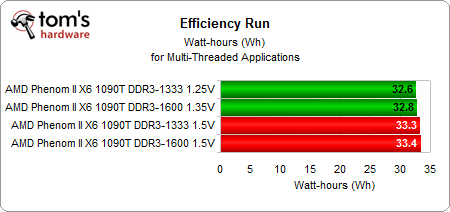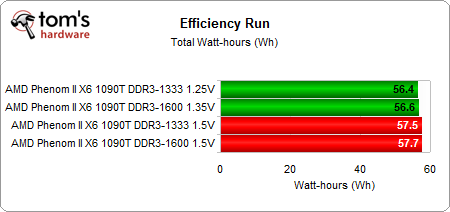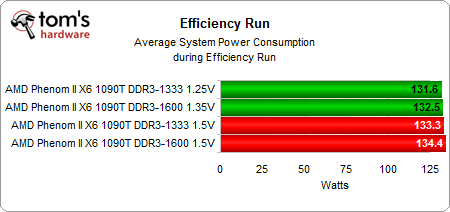How Much Power Does Low-Voltage DDR3 Memory Really Save?
Kingston’s HyperX LoVo-series DDR3 memory allows users to reduce voltage to 1.35 V or 1.25 V in order to save power and allegedly decrease system temperature. We test the eco-friendly modules to find out if it really makes sense to run undervolted memory.
Benchmark Results: Multi-Thread And Overall Efficiency
Multi-Thread Efficiency
The multi-threaded workload terminates quicker on the two low-voltage configurations. But again, the difference is really small.
Average power consumption during our multi-threaded applications workload decreased…
…along with the total power required to tackle the workload.
Overall Efficiency
Overall, runtime for our full efficiency workload (single- and multi-threaded applications) decreased by only a few seconds.
At the same time, the total power required decreased slightly…
Get Tom's Hardware's best news and in-depth reviews, straight to your inbox.
…together with the average system power. Let’s relate performance to power consumption.
As you can see, efficiency expressed in performance per watt (runtime relative to total power used) increases by 1.96% with DDR3-1333 going from 1.5 V to 1.25 V and by 2.01% on DDR3-1600 at 1.35 V vs. 1.5 V. Again, this isn't a lot alongside a fast Phenom II X6 and a powerful Radeon HD 5850 graphics card, but if you were to use low-power components, then the efficiency improvement would naturally be a few percent higher.
Current page: Benchmark Results: Multi-Thread And Overall Efficiency
Prev Page Benchmark Results: System Power Consumption And Single-Thread Efficiency Next Page Conclusion